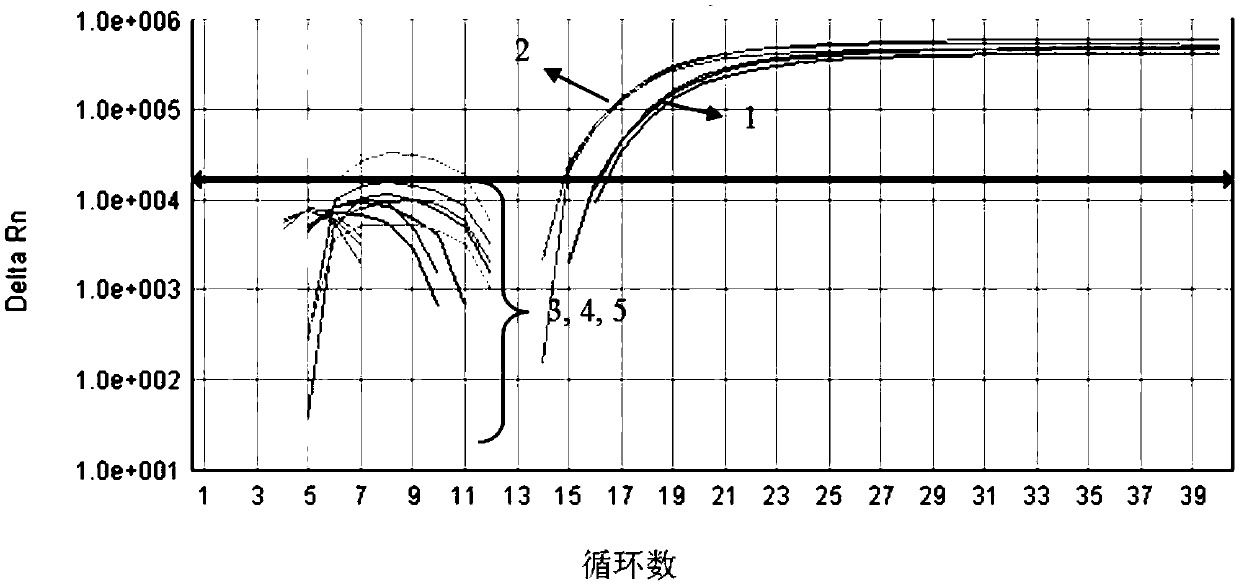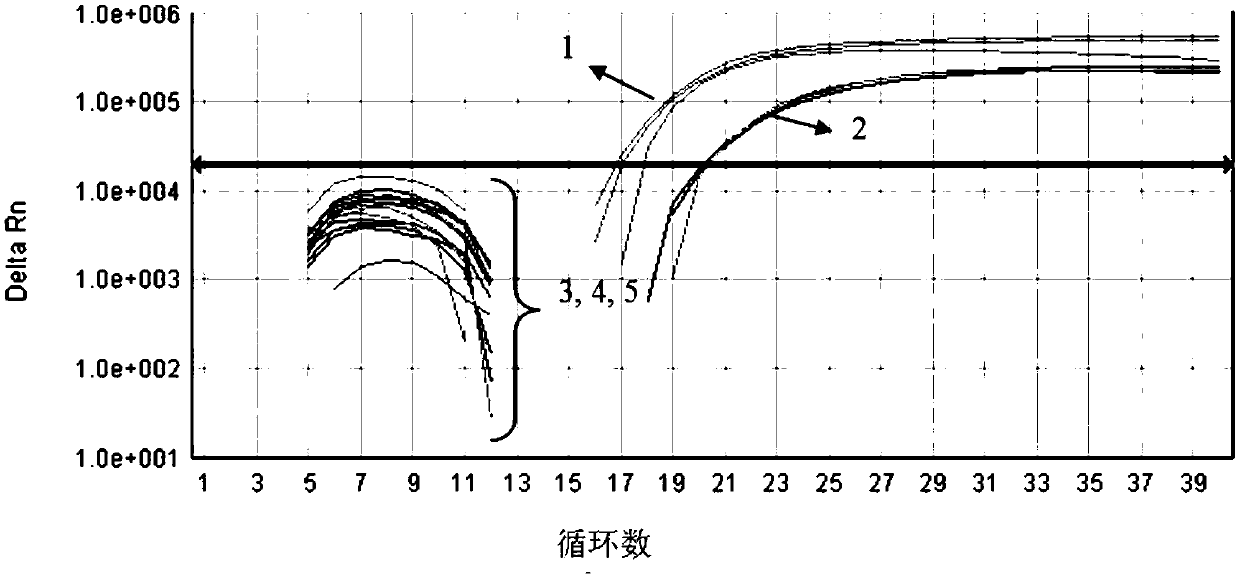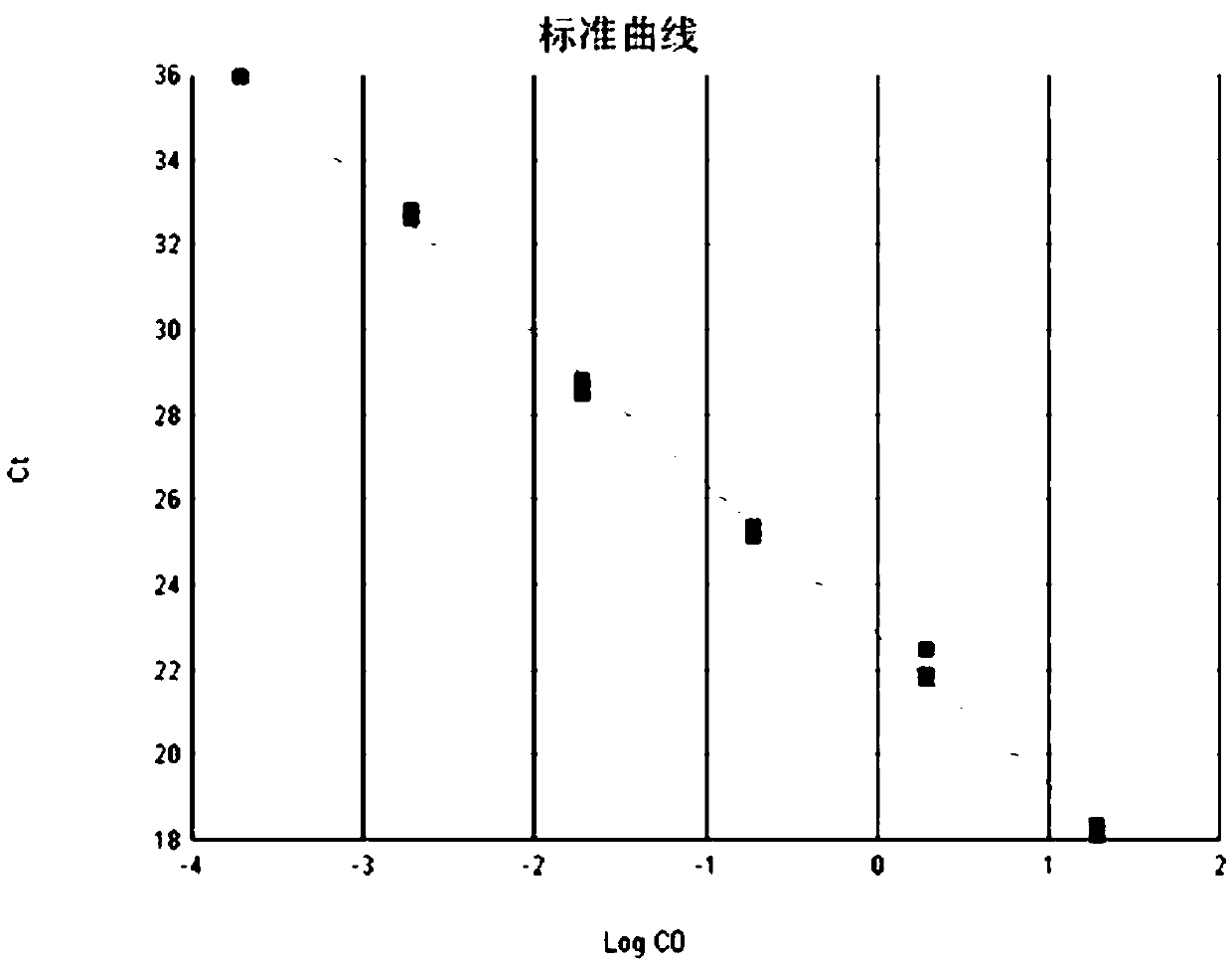Detection method and application of real-time fluorescent PCR for Pythias spp.
A technology of real-time fluorescence and detection methods, applied in the direction of biochemical equipment and methods, microbial determination/inspection, etc., can solve the problems of immature importing countries with immature inspection methods, increasing the consumption of quarantine treatment costs, and increasing the risk of prohibiting exports, etc. Achieve the effect of avoiding false positive detection results, high specificity, and high amplification specificity
- Summary
- Abstract
- Description
- Claims
- Application Information
AI Technical Summary
Problems solved by technology
Method used
Image
Examples
Embodiment 1
[0071] Embodiment 1, design and synthesis of primers and probes
[0072] By collecting samples of adult and larvae of Ceratocystis spp. from different areas in Bazhou, Xinjiang, with COI universal primers: forward primer: 5'-GGWGGATTTGGAAATTGAYTAGTWCC-3', reverse primer: 5'-CCHGGTAAAATTAAAATAAACTTC-3', by conventional PCR Amplification and product sequencing obtained the fragment sequence of the COI gene of C. Through the BLAST comparison in NCBI, the COI characteristic sequence of Ceratocystis argentina is compared, and the sequence homology reaches 97% (KC215198.1, KC442311.1, KC442309.1), that is, the COI region is highly conserved, which ensures the primer design accuracy. In addition, we also compared and analyzed the COI sequences of Pythias spp., codling moth, and pear borer to find the difference sites between them, and designed species-specific primers and probes in the difference sequence regions. Needle, and commissioned Takara (Dalian, China) company synthesis an...
Embodiment 2
[0084] The extraction of embodiment 2 total DNA
[0085]Take positive samples of pear borer moth, codling moth, and pear borer, put them into a mortar, add liquid nitrogen and grind them thoroughly, use DNeasybloodkit (Qiagen Company) to extract DNA from the samples, and operate according to the kit instructions. The amount of muscle tissue used in sample extraction: codling moth: single head 2.5-5.0mg, multi-head (4-5) 15-20mg; pear borer: single head 0.8-1.2mg, multi-head (12-13) 12 -16mg; Pear moth: single head 1.8-2.2mg, multi-head (3-5) 8-12mg; cutworm: single head 8-12mg; single head plus 30μLTE buffer for elution, multiple head plus 60μLTE buffer liquid elution. The DNA solution was stored at -20°C for future use.
[0086] The extracted DNA solution was detected by a nucleic acid protein analyzer, and the OD260 / 280 was greater than 1.5, and the OD260 / 230 was greater than 1.0. The extraction effect was good, and the concentration was 30-200ng / μL (without RNase degradat...
Embodiment 3
[0088] Embodiment 3 real-time fluorescent PCR detects
[0089] The 25 μL real-time fluorescent PCR reaction system includes: sterilized distilled water 16.75 μL, 10×PCRBuffer (containing Mg2+) 2.5 μL, dNTP (2.5mM, each) 2 μL, upstream and downstream primers YB-FP, YB-RP (10 μM) each 0.5 μL , 0.5 μL of probe YB-P (10 μM), 0.25 μL of 500 UTaq DNA polymerase and 2 μL of DNA template (DNA solution extracted from Example 2). The reaction mixture was amplified in an ABI7500 real-time quantitative PCR instrument. The reaction conditions were set as pretreatment at 95°C for 15s, denaturation at 95°C for 5s, annealing / extension at 60°C for 34s, and 40 cycles. At the same time, set up repeated experiments and positive control, negative control and blank control experiments. The experimental results are analyzed and processed using ABI7500softwarev2.0.1.
PUM
| Property | Measurement | Unit |
|---|---|---|
| body length | aaaaa | aaaaa |
Abstract
Description
Claims
Application Information
 Login to View More
Login to View More - R&D
- Intellectual Property
- Life Sciences
- Materials
- Tech Scout
- Unparalleled Data Quality
- Higher Quality Content
- 60% Fewer Hallucinations
Browse by: Latest US Patents, China's latest patents, Technical Efficacy Thesaurus, Application Domain, Technology Topic, Popular Technical Reports.
© 2025 PatSnap. All rights reserved.Legal|Privacy policy|Modern Slavery Act Transparency Statement|Sitemap|About US| Contact US: help@patsnap.com



